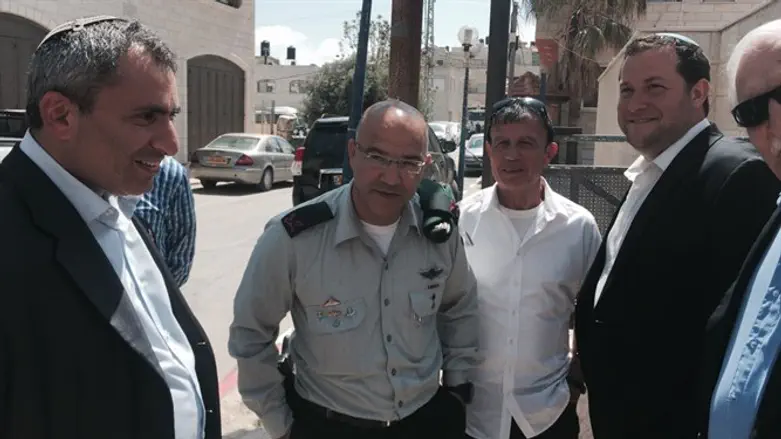
The Israeli Defense Ministry’s Civil Administration linked one of the last remaining Samaritan communities to Israel’s water treatment system, Thursday, with a special ceremony in the Palestinian Authority-controlled city of Shechem.
The Samaritans are an ancient people generally believed to be descended either from converts to Judaism moved into Samaria by the Assyrian empire, Jews from the northern Kingdom of Israel who remained in Samaria following the Assyrian conquest, or some mixture of the two.
Census figures suggest the once numerous Samaritans now number just under 1,000, with almost half living on the edge of Shechem in Samaria. The remainder live in cities inside the 1949 Green Line.
While most of the Samaritan community lived inside Shechem prior to the establishment of the State of Israel in 1948, following the War of Independence many Samaritans moved from Samaria, then occupied by Jordan, and into Israel.
This process accelerated in the late 1980s following the eruption of the First Intifada, when many Samaritans were forced to flee Shechem amidst growing hostility from local Muslims.
Today, most of the Samaritan community in Shechem lives in Kiryat Luza, a neighborhood on the edge of Shechem, close to the Jewish community of Har Bracha. Kiryat Luza is under joint administration by Israel and the Palestinian Authority.
Kiryat Luza took one step towards greater integration with Israel on Thursday, when the local sewage system was linked up with Har Bracha’s water treatment infrastructure.
Environmental Protection Minister Zeev Elkin joined Samaria Regional Council chief Yossi Dagan, Civil Administration chief Brigadier General Ahvat Ben-Hor, and Samaritan High Priest Ovadia Ben Asher for an inauguration ceremony of the linked system in Kiryat Luza.
The nearly four million shekel project ($1,107,000) modernizes the sewage system of some 400 Samaritans in Kiryat Luza and links it to Israeli treatment plants. The project not only improves the quality of life for the residents of Kiryat Luza, but also removes the threat of environmental damage posed by the leaking or overflowing of untreated sewage. In particular, raw sewage on Mount Gerizim posed a threat to underground aquifers.
The project, says Ben-Hor, is just part of efforts by the Civil Administration to integrate Kiryat Luza and provide greater services to residences.
“The Civil Administration views the linking of the neighborhood to the [Israeli] sewage system as a flagship project, and I’m happy that after a year and a half of hard work we were able to dedicate [the new system] at this fine ceremony today. We’re also in the final stages of building a specialist clinic in the Samaritan neighborhood which will provide medical aid to all residents in the area.”
